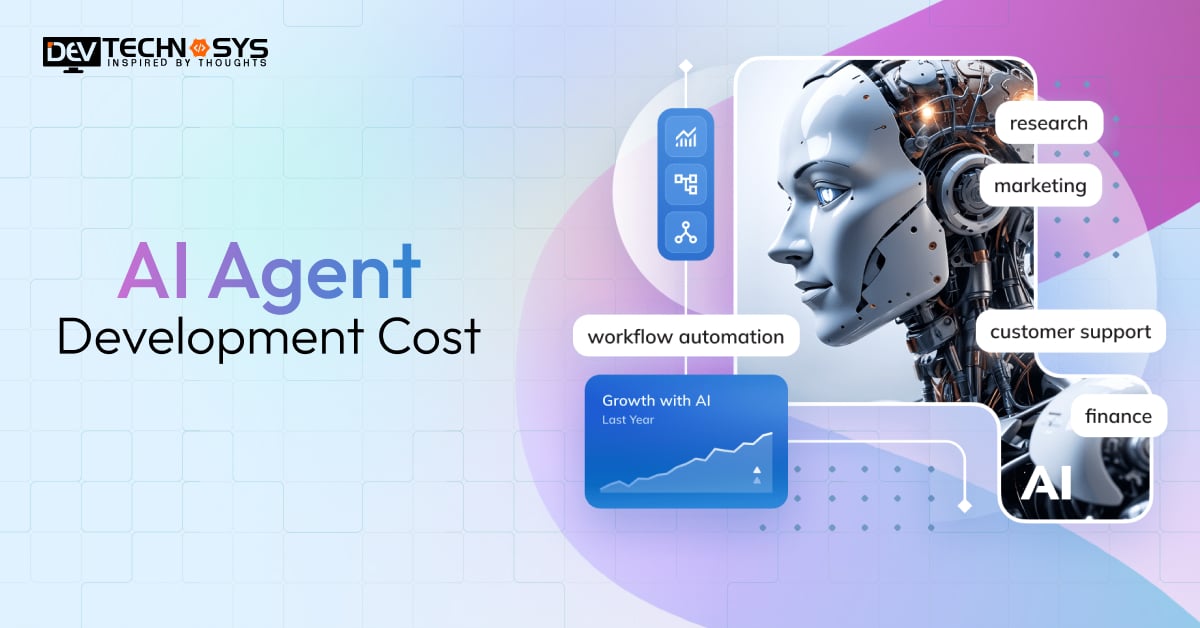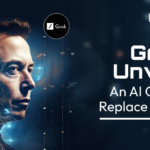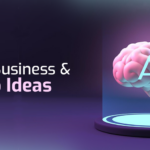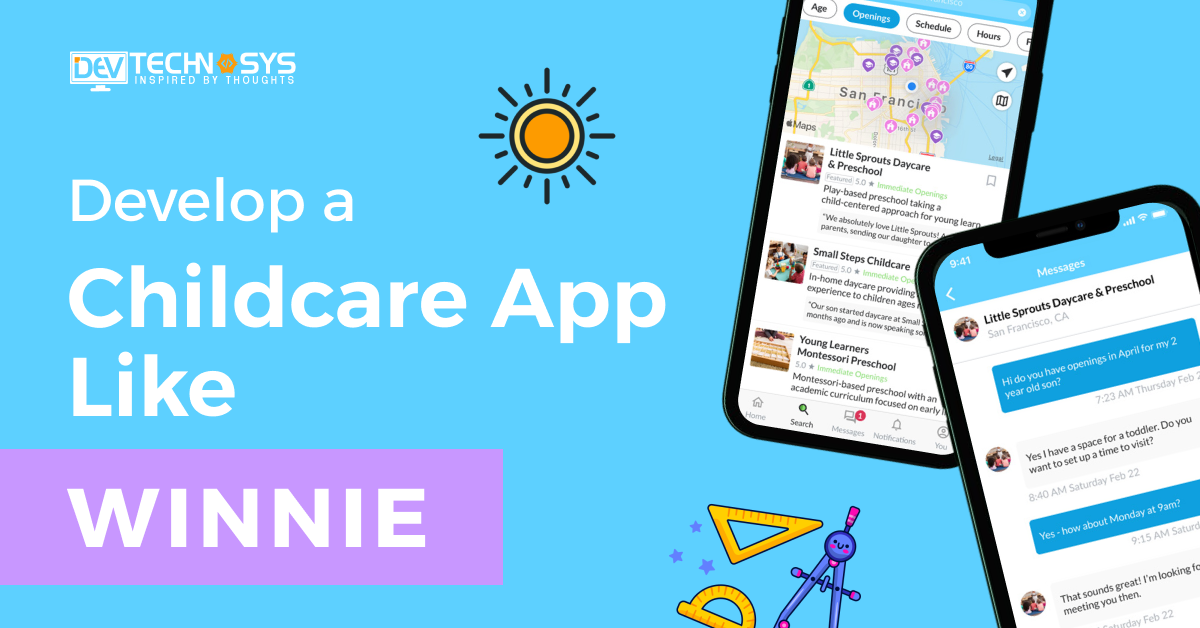AI agents are changing how businesses interact with customers, automate tasks, and make decisions. From chatbots to voice assistants, more companies are investing in intelligent virtual agents to boost productivity and user experience.
According to a report by Statista, the global AI software market is expected to reach $305.90 billion by 2025, highlighting how fast businesses are adopting AI-powered tools like agents and assistants
But how much does it really cost to develop one?
Key takeaways:
-
- AI agent development costs range from $8,000 to $30,000+, depending on type, features, and intelligence level.
- Key cost factors include data quality, real-time capabilities, integrations, and system architecture.
- Custom AI agents offer flexibility and control but require higher investment than ready-made solutions.
- Costs can be optimized by using pre-trained models, open-source tools, cloud platforms, and outsourcing to expert AI development companies.
Whether you’re a startup planning your first AI assistant or an enterprise looking to build a custom intelligent solution, this blog will break down the costs involved, based on features, tech stack, project size, and real-world examples.
Let’s dive into what goes into building a smart AI agent and how to optimize your investment.
What is an Agent?
An AI agent is a software program that uses artificial intelligence to sense its environment, make decisions, and take actions with minimal or no human intervention. Typical use cases include automation, virtual assistants, robotics, and intelligent systems.
AI Agent Development Cost on the Basis of Types
You must have a list of AI agent types that will help you understand which one you should choose for your business. But wait, know the AI agent development cost on the basis of its types because this will change your.
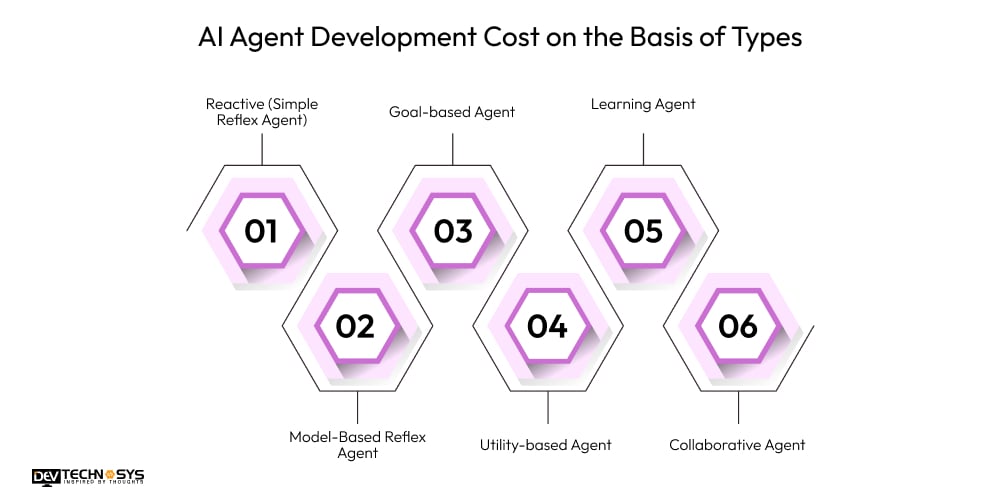
1. Reactive (Simple Reflex Agent)
What is a Reactive Agent?
Reactive agents refer to the agents that operate via condition-action rules. They do not have memory of previous selections and can’t project into the future. Reactive agents respond to the environment and the state of their information processing, applying rules to output a predefined response.
Reactive Agent Development Cost
Reactive agent development costs between $10,000 and $15,000 to build an AI agent. Reactive agents do not have significant architectural or learning implications, so they make them suitable for basic automation scenarios or basic simulations.
The Reactive agent development costs can vary slightly depending on the specific use case (i.e., chatbots vs. IoT). Their basic criteria and operation ensure a much faster time to deploy, but also less configuration and less capability to adapt from bots that learn, or can learn from history, or more advanced agent types.
2. Model-Based Reflex Agent
What is a Model-Based Reflex Agent?
Model-based reflex agents refer to agents that are based on simple reflex agents but can keep an internal model of the world, allowing them to operate in a partially observable environment.
With the additional information from the internal model of the world, the agent is able to use historical data with environmental data to enhance the decision-making process.
Model-Based Reflex Agent Development Cost
Model-based reflex agent development costs range from $8,000 to $12,000. This would include the development of a state representation model to allow for tracking of changes in the environment. This adds complexity and increases development time as compared to basic reactive agents.
However, developing a model-based reflex agent is the ideal option for a project when using current sensor data alone would not provide sufficient information to make the best choices for action in a dynamic setting, such as a robot navigation task.
The more complex and integrated the internal model and sensory data are to the agent, typically, the more it can increase the overall AI agent development cost.
3. Goal-based Agent
What Is A Goal-Based Agent?
Goal-based agents refer to agents that function based on things to accomplish. They consider multiple actions and outcome possibilities and will consider the best approach to take to accomplish a predefined goal. They improve upon the simple reflexive actions of the previous two agents by adding planning to the action and reasoning ability to the agent.
Cost To Develop Goal-Based Agents
The cost to build an artificial intelligence project like goal-based agents is typically between $8,000– $15,000. This cost would include implementing a planning system, decision trees, and probably a state-space searching algorithm.
Once again, the costs and development space of full developmental underwater agents subject matter are 1/2 of the challenge; the other 1/2 of the challenge is the definition of goals, the paths toward those goals, and determining how those goals will be evaluated.
All of these complexities add to the goal-based agent development cost, especially as the number of goals and possible states to evaluate increases.
4. Utility-based Agent
What is a Utility-Based Agent?
Utility-based agents refer to agents that not only want to achieve goals, but they want to choose the best state among the multitude of states they can choose from by using utility functions. They assess how ‘good’ an outcome is, allowing judgment with uncertainty.
Utility-Based Agent Development Costs
The cost to develop an app like Perplexity.ai or a utility-based agent ranges from $12,000 to $16,000. Utility-based agents utilize complicated algorithms to rank utility scores to make comparisons of trade-offs and evaluate probabilistic outcomes.
Utility-based agents are used in financial systems, smart assistants, and resource optimizers. Utility-based agents require complex data modelling, which is often combined with AI/ML, both of which increase the utility-based agent development costs, and likewise, developing utility-based agents will also cost more with more utility parameters and with larger state spaces.
5. Learning Agent
What is a Learning Agent?
Learning agents refer to agents that leverage past experiences to improve their performance over time. A learning agent will have a learning component that allows the agent to make changes to its behavior or knowledge base by collecting data and receiving feedback.
Learning Agent Development Costs
The cost of building a learning agent typically starts from $17,000 based on complexity. A learning agent uses machine learning (supervised learning, unsupervised learning, or reinforcement learning) with a data pipeline for data collection and a retraining process.
Learning agents are typically used in personalized systems that require characteristics from the user, such as recommendation engines or adaptive robotics.
The learning agent development cost will also depend on factors such as available data, model complexity, and whether continuous model learning is required, making them expensive and resource-draining as compared to static agents.
6. Collaborative Agent
What is a Collaborative Agent?
Collaborative agents refer to agents that cooperate with either other agents or humans to achieve common tasks. They need to engage in communication and negotiation, and are often required to accommodate shared or conflicting goals in a multi-agent environment.
Collaborative Agent Development Cost
The collaborative agent development cost can range from $14,000 to $21,000+ and will always require a multi-agent system design, inter-agent communication protocols, coordination strategies, and typical users will also typically want a natural language interface.
Collaborative agents can also be used in logistics, simulations, and collaborative robotics, and they take sophisticated backend architecture and synchronization capabilities; however, the costs become even greater when real-time collaboration is needed or for developing multiple intelligent systems with role behaviour models.
Interested in a chatbot demo, pricing, or more info? Fill out the form our expert will contact you shortly.
-
Chatbot Demo
-
Cost to Develop an app
-
Industry Report
-
Case Study
What Factors Influence the Cost To Develop An AI Agent?
Now that you know the cost to develop an AI agent based on its type, you should also be aware of the factors that influence its entire cost. Yes, you heard it right. The cost of AI development is not only influenced by its type but also by several factors. Here, we have covered some of the top priority factors affecting the AI agent’s cost of development.

1. Scope and Intelligence Level of the Agent
The more intelligent and autonomous the AI agent has to be, meaning self-learning or multi-tasking capabilities. The more costly the agent will be to develop.
For the more simplistic agents, one would think about something that would incorporate basic logic into that agent, and in terms of costs, that is not all that involved. This is a huge time addition, an added resource commitment, and additional infrastructure that needs to be factored into the AI agent cost of development.
Intelligence Level |
Estimated Cost Impact |
| Basic rule-based agent | $8,000 – $12,000 |
| Moderate logic with limited autonomy | $12,000 – $18,000 |
| Advanced self-learning, multi-tasking | $20,000 – $30,000+ |
2. Availability and Quality of Training Data
The performance of an AI agent is highly dependent on available data. AI agents are dependent on data availability, and if there is insufficient data, or the data is unstructured or not labeled, it will take a lot of time, effort, and resources around data collection, data cleaning, and data labeling. Having quality data is key to accurate predictions, and finding or building that data from scratch adds time and dollars.
Data Condition |
Estimated Cost Impact |
| Clean, labeled, and ready-to-use data | $8,000 – $10,000 |
| Requires moderate cleaning and labeling | $10,000 – $16,000 |
| Data unavailable or unstructured | $16,000 – $25,000+ |
3. Hosting and Architecture
How and where the AI agent is hosted, be it in the cloud, on-premise, or on-edge, has an impact on the total AI agent cost of development. Cloud hosting offers scalability but can have complementary costs, whereas edge hosting requires hardware to be optimized in order to achieve a viable AI agent.
Selecting the proper architecture to ensure that AI functions without latency, but defaults to all things technical, also leads to more cost to build an AI agent.
Hosting Type |
Estimated Cost Impact |
| Cloud Hosting | $8,000 – $12,000 |
| On-premise Setup | $12,000 – $18,000 |
| Edge Deployment | $18,000 – $25,000+ |
4. Feature Customizations and Integrations
When your AI agent has more features and integrates into a plethora of services—like CRM platforms, ERP systems, or payment gateways—the development and design become more challenging and thus expensive.
Integrating custom APIs, discrepancies with the service providers, and the effort to sync real-time data are additional coding, acceleration, testing, and troubleshooting, which all contribute to the overall timeline of the project.
Integration Complexity |
Estimated Cost Impact |
| Basic features, few integrations | $8,000 – $11,000 |
| Moderate features with APIs | $11,000 – $17,000 |
| Advanced features & ERP/CRM systems | $17,000 – $28,000+ |
5. Real-Time Interaction Capabilities
When designing AI agents with real-time response capabilities from a system perspective, using a chatbot, support bot, etc. There is rapid processing, continual model serving, and back-end system performance and infrastructure to be optimized.
Building this system is more complex and requires high performance of the system and significant programming effort, thus leading to higher costs than developing agents in a scheduled or batch processed environment.
Real-Time Processing Level |
Estimated Cost Impact |
| Scheduled or batch response | $8,000 – $10,000 |
| Semi-real-time chatbot | $10,000 – $18,000 |
| High-speed real-time bot or agent | $18,000 – $30,000+ |
6. Multilingual and Voice Interaction Capabilities
If your AI agent is going to need to have and comprehend capabilities to speak or transact, in one or more languages, or facilitate and know how to communicate via voice, then the construction will be that much more expensive and complicated.
This includes areas like speech recognition, language modeling, and pronunciation tuning. All of these levels will need to be built to involve NLP expertise and will be implemented through specialized APIs, which also extend the additional cost of Chatbot development services.
Communication Feature Type |
Estimated Cost Impact |
| Text-only, single language | $8,000 – $10,000 |
| Multilingual text interactions | $10,000 – $17,000 |
| Voice-enabled, NLP powered agent | $17,000 – $30,000+ |
7. Scalability and Load
You will need to have a scalable infrastructure if your AI agent needs to accommodate thousands of users or have a high transaction volume. To provide a scalable architecture, work with concurrency, and run performance testing will require additional doohickeys.
The cost to build an AI agent will also increase due to load managers, caching, and architectural failover, which have components to support always-on operations.
User Load & Architecture Level |
Estimated Cost Impact |
| Low concurrency, minimal users | $8,000 – $10,000 |
| Medium scalability needs | $10,000 – $18,000 |
| High user load, robust failover setup | $18,000 – $28,000+ |
8. User Feedback and Learning Loops
AI agents that learn from users will require the appropriate learning loops for adaptive learning, which also means leveraging reinforcement learning or retrain pipelines.
Operating and having the functionality of these platforms will not be straightforward to set up and depend on the agent’s capabilities to log user data, ongoing retraining, and version controls, which increases the overhead of tech debt, contributes to the
convoluted back-end, and increases the cost to build an AI agent.
Learning Integration Level |
Estimated Cost Impact |
| Static model, no feedback loop | $8,000 – $10,000 |
| Manual retraining & logging | $10,000 – $18,000 |
| Adaptive/reinforcement learning | $18,000 – $30,000+ |
9. Legal, Ethical & Bias Reduction Layers
Making sure that the AI agent stops being a louse, doesn’t misbehave, or discriminate requires suitable bias detection functions, fairness audits, and model explainability functions.
Also, to comply with AI ethics, regulations, and for some agencies, verification can invoke independent audits or other third-party validations, which adds to the total cost to develop an AI agent.
Compliance Measures Included |
Estimated Cost Impact |
| Minimal checks, no audits | $8,000 – $10,000 |
| Standard fairness & bias testing | $10,000 – $17,000 |
| Full audits, explainability layers | $17,000 – $30,000+ |
10. Post-launch Monitoring and Analytics
After launch, the AI agent needs to move into continuous threads to monitor its live performance. This includes dashboards, anomaly detection, user analytical features, and monitoring for model drift, and all of them add to the overall cost to build an AI agent.
These technologies aim to provide long-term agent fidelity and accountability; upon launch, they require a detailed level of development and cloud service subscriptions.
Monitoring Depth |
Estimated Cost Impact |
| Basic analytics dashboard | $8,000 – $11,000 |
| Real-time monitoring & alerts | $11,000 – $18,000 |
| Model drift & advanced diagnostics | $18,000 – $30,000+ |
Real-World AI Agents: What They Reveal About Development Costs
Ever wondered what it takes in terms of costs (technical and monetary) to build the most advanced AI agents today? Here are some real-world examples, what they most likely cost to develop an AI agent, and what contributes to their potential (or limits):
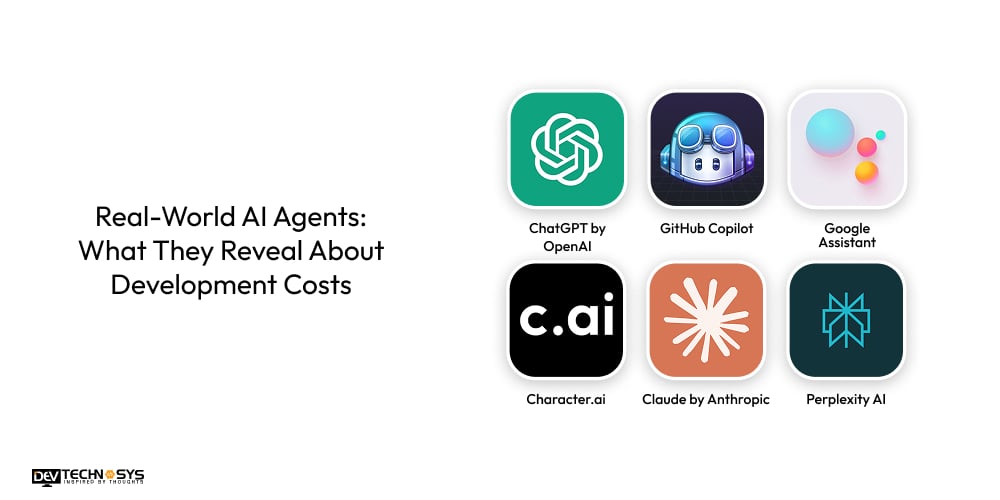
1. ChatGPT by OpenAI
- Opportunity Cost: $100M – $500M+
- Explanation:
ChatGPT is a distributed conversational AI model that was trained on the internet. Its ability to process complicated queries, construct human-like responses, and interact with humans in a range of capacities, from customer experience to education to creative writing.
2. GitHub Copilot
- Opportunity Cost: $75M – $120M
- Explanation:
A coding assistant AI. Built on OpenAI Codex, it can predict and create code in real time. Very useful for developers who want to be efficient, present value to their stakeholders faster, and spend less time on manual tasks.
3. Google Assistant
- Opportunity Cost: $200M – $600M+
- Explanation:
An AI-controlled voice assistant that allows users to engage with smart home devices and applications. The success of Google Assistant lies in its not only acting as a voice assistant but also being deeply integrated within the Google ecosystem and the level of responsiveness for voice conversations.
4. Character.ai
- Opportunity Cost: $50M – $80M
- Explanation:
A creative AI that allows users to create digital personalities and fictional agents. Best for entertainment, role-playing, and storytelling applications with customizable AI interactions.
5. Claude by Anthropic
- Estimated Cost: $100M – $400M
- Explanation:
Claude is focused on AI safety and alignment. It is built for enterprises that need trusted and reliable outputs that hallucinate less, while also ethically processing sensitive or ambiguous requests.
6. Perplexity AI
- Estimated Cost: $25M – $60M
- Explanation:
A search-like AI that offers fact-checked, citation-backed answers. Combines LLM capabilities with real-time web data to provide trustworthy support for researchers, students, and professionals.
Unexpected Factors That Increase AI Agent Development Cost
We aren’t someone who hides costs within. For you, we have compiled a list of factors that unexpectedly increase the cost of building an AI agent. So grab your coffee, sit back. This blog is gonna give you a lot that you didn’t expect at once.
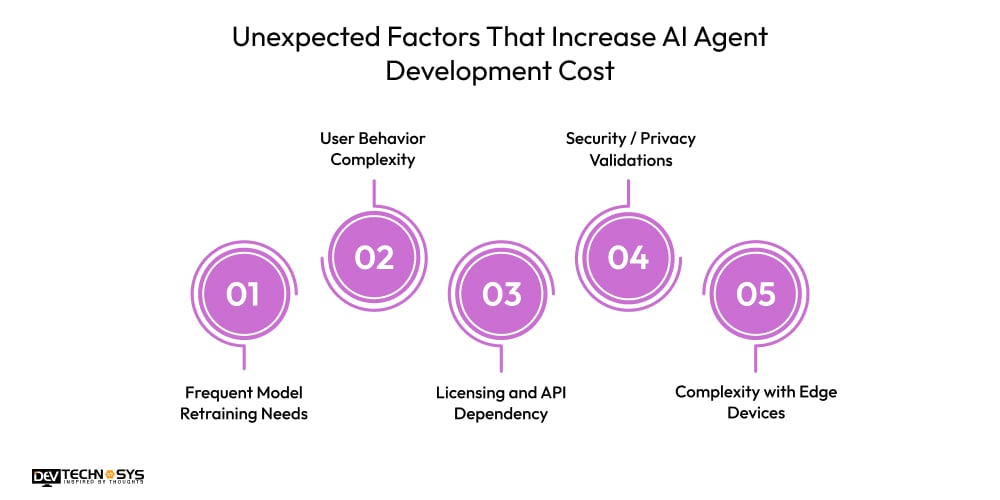
1. Frequent Model Retraining Needs
AI models disappear if not re-trained. If the agent requires that you are cognizant of trends, user behavior, or regulations, there are more ongoing assumptions.
Basically, you are going to incur the cost to collect and prepare data, fine-tune models, and deploy, which many organizations underestimated in the original AI agent development cost.
2. User Behavior Complexity
If your users use variables against the AI in unpredictable ways, e.g., slang, sarcasm, intent models, behavior models, edge cases, then you have work related to natural language processing services, behavior models, and edge case behaviors.
You will have to spend additional time, testing, and re-configuring models to ensure agents are aware of these complex behaviors; this will be a factor in the total AI Agent development cost.
3. Licensing and API Dependency
Most AI agents are based on third-party APIs or pre-trained models (e.g., from OpenAI or Google), which will have usage limitations or monthly/ annual costs.
The cost to develop an AI agent will scale dramatically as usage scales–something organizations may not pay attention to, or consider just as relevant, as being “off-the-shelf” integrations.
4. Security / Privacy Validations
Problems implementing features, like encryption, secure data storage, user authentication, and compliance with privacy regulations (e.g., GDPR, CCPA), that significantly drive up cost.
Security and privacy modules need specialists to help mitigate proper integrations, legal reviews, and can get overly complicated to implement if the AI agent is saving or computing any kind of sensitive information (e.g., health, finance, personal data).
5. Complexity with Edge Devices
If it is required for the AI agent to run on edge devices (think mobile phones, smart speakers, or even IoT hardware), you will have to think even more about how fast the AI agent will work and how you will need to develop and optimize it. For edge devices, you may need smaller versions of the models, latency restrictions, or limited compute power.
AI Agent Features with Estimated Development Costs
Get your hands on this incredible guide that will give you AI agent features at no cost. Here is a list of essential and advanced features of an AI agent with cost estimation.
Key Feature |
Estimated Cost |
Advanced Feature |
Estimated Cost |
| Intent Recognition | $3,000 – $7,000 | Context Awareness | $7,000 – $15,000 |
| Entity Extraction | $2,000 – $5,000 | Self-Learning Capabilities | $10,000 – $20,000 |
| Rule-Based Responses | $1,500 – $4,000 | Emotion Detection | $8,000 – $16,000 |
| Multi-Channel Support | $5,000 – $10,000 | Voice Interaction Support | $10,000 – $18,000 |
| Simple Data Integration | $3,000 – $6,000 | Real-Time Decision Making | $12,000 – $25,000 |
| Basic Analytics Dashboard | $4,000 – $8,000 | Multilingual Support | $6,000 – $12,000 |
| FAQ Handling | $2,000 – $4,500 | Predictive Suggestions | $8,000 – $14,000 |
| Welcome & Error Handling | $1,500 – $3,000 | Personalized Recommendations | $9,000 – $18,000 |
| Session Management | $3,000 – $6,000 | Integration with IoT Devices | $10,000 – $20,000 |
| Feedback Collection Module | $2,500 – $5,000 | Advanced Analytics & Insights | $8,000 – $14,000 |
6 Stages To Create An AI Agent
In this section, we have covered a step-by-step guide to create an AI agent with cost estimation for each stage. So don’t wonder about what steps would be there and how much the cost of AI generation will be in 2025.
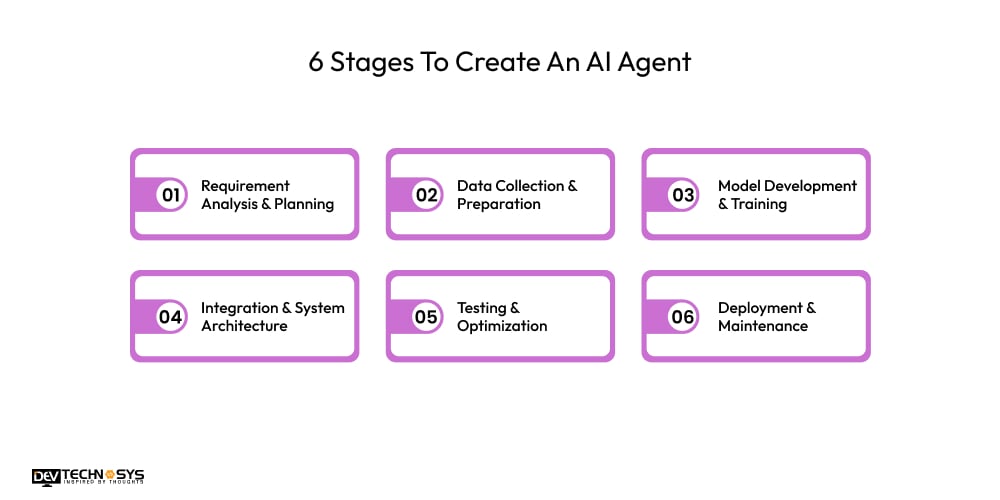
1. Requirement Analysis & Planning
Hire an AI Chatbot development company to outline the goals for the AI agent, main capabilities, intended users, and software and hardware environment.
Also, it notes that the teams engage in feasibility studies, resource planning, and technology stack selection. Getting this documentation right will help avoid extra AI agent development costs.
Estimated Cost: $5,000 – $10,000
2. Data Collection & Preparation
AI agents require extensive clean data for training, and so this step is responsible for identifying appropriate data, cleaning, and labelling as necessary. AI agent development costs vary based on the size of the data set, the complexity of the domain, and privacy considerations.
Estimated Cost: $4,000 – $8,000
3. Model Development & Training
Hire developers from an artificial intelligence development company to decide on a suitable machine or deep learning model, and then they train, validate, and fine-tune the best one using the cleaned data.
This step can be resource-intensive as they often only have access to GPUs within cloud services, so it can be the most expensive phase to get through, and there will be a lot of experimentation as they work out what works best.
Estimated Cost: $8,000 – $10,000
4. Integration & System Architecture
At this phase, the AI model is embedded into the existing systems, tools, or user interface. This includes backend, API development, front-end, and interaction with stakeholders. If there is a requirement to integrate with CRM, ERP, or custom-developed software, this will have made this step more difficult and expensive.
Estimated Cost: $6,000 – $12,000
5. Testing & Optimization
The agent is subjected to functional, performance, and security testing. At this stage, there is bias detection testing, accuracy testing, potential feedback loops run, etc. After everything is complete, the models are optimised to minimise latency and resource usage while improving performance.
Estimated Cost: $4,000 – $12,000
6. Deployment & Maintenance
Once tested, the next step is to deploy the AI agent onto either a cloud or edge infrastructure. Hire a professional AI development services provider to conduct post-launch iterations, including continuous monitoring of the agent, retraining, bug fixing, performance updates, etc. The cost of maintenance will vary depending on the usage and complexity of the environment.
Estimated Cost: $6,000 – $8,000 annually
How to Reduce the Cost to Develop an AI Agent: 7 Proven Ways
The cost to create an AI app requires careful planning and smart execution, there are many ways to effectively decrease costs without compromising quality. Below are seven straightforward ways to break down the AI agent development cost:
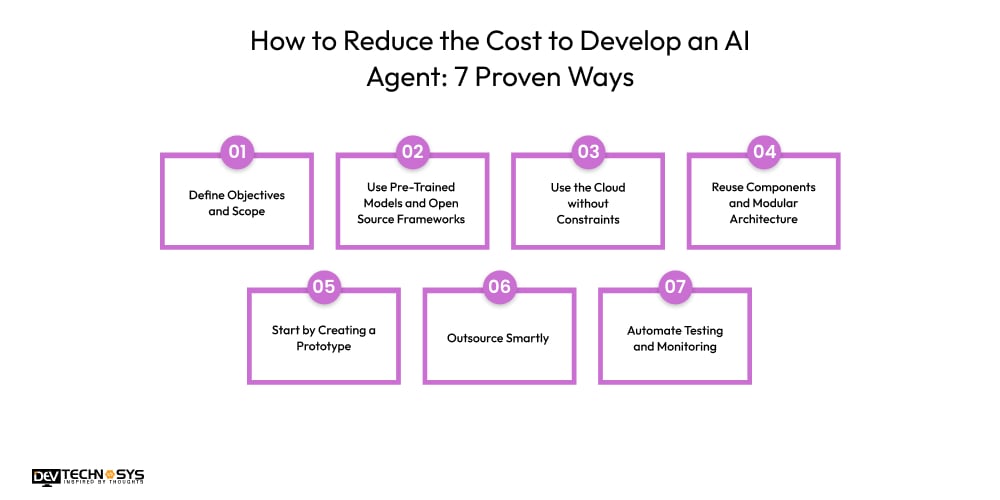
1. Define Objectives and Scope
To begin, define the scope of your AI agent.
- What do you want the AI agent to do?
- Automate customer support?
- Process data?
- Provide recommendations?
Avoid overbroad objectives or unwanted capabilities – you want to prevent the scope of costs from increasing. By making the scope explicit with a focused MVP (minimum viable product), you will decrease AI agent development costs.
2. Use Pre-Trained Models and Open Source Frameworks
Rather than going to the effort of building architecture or complex AI models from scratch, you can take advantage of pre-trained AI models to save both money and effort.
In addition to pre-trained models, you can also use open source tools and libraries that can do a lot for things like: natural language processing, computer vision, data classification, etc., at little or no cost, while significantly speeding development time.
3. Use the Cloud without Constraints
We see numerous cloud platforms, for example, AWS, Google Cloud, and Azure, for the infrastructure of AI systems, with the scalability for development and deployment. However, you can easily incur high bills if you accidentally choose over-provisioning with some kind of resource.
Spend time using optional features like autoscaling, serverless, and cost tracking tools to be charged only for what you use (not hidden spin-ups that become expenses unknowingly).
4. Reuse Components and Modular Architecture
Prioritize the use of a modular structure to develop your AI agent. Continue to reuse as much of the pre-existing code, microservices, and/or pre-packaged APIs as possible. Utilizing modular aspects shortens development timelines, allows for easier testing and updates, and lowers time to market and overall maintenance costs.
5. Start by Creating a Prototype
It is better to create a working prototype or proof of concept rather than a full-fledged AI solution. This allows you to validate concepts, gather feedback, and enhance them right away.
Iteratively creating your AI solution consumes more of your time now, but prevents significant problems from being expensive mistakes at a later stage, while assuring that you develop only the necessary features that the users need.
6. Outsource Smartly
Hiring an AI consulting services provider in-house can be costly. Use qualified vendors in AI to perform selected work tasks, like data labeling, model training, or UI/UX design, even if you have to supervise or validate some of the tasks they perform.
You may be able to save money working with the right partners while maintaining access to some of the best expertise in AI development.
7. Automate Testing and Monitoring
Testing, when done manually, and monitoring after launch can consume your budget. Use automated testing tools and performance monitoring platforms, so you can mitigate bugs early on, while tracking the accuracy and levels of performance of AI over time.
Automated protocols maintain repeated quality while driving down ongoing development/production, and maintenance costs.
Should You Build or Buy an AI Agent? A Strategic Cost & Feature Breakdown
Aspect |
Custom-Built AI Agent |
Ready-Made AI Solution |
| Ideal Use Scenario | Perfect for dynamic, evolving, or complex workflows needing full flexibility | Great for basic to moderate tasks with defined use paths |
| Delivery Timeline | Typically 3–6 months or longer, depending on project scope and complexity | Can be deployed within 2–6 weeks depending on vendor setup |
| Upfront Cost Range | Starts around $40K and may reach $400K+ depending on features, tech stack, and integration | Licensing/subscription ranges between $10K and $100K annually |
| Yearly Expenses | Ongoing support, cloud usage, retraining, infra upgrades ($10K–$50K/year) | Recurring subscription fees; extra for premium support |
| Tailoring & Control | Highly customizable – aligned with internal systems, data flows, and business logic | Customization options are limited to vendor’s available configurations |
| System Integration | Easily integrates with in-house tools like CRM, HRMS, ERP, or legacy systems | Mostly confined to pre-supported connectors and third-party APIs |
| Data Security | Full authority over how data is collected, stored, and used | Vendor often controls and processes the data |
| Future Growth Support | Designed to grow with business needs, adaptable to new challenges | Expansion depends on vendor’s infrastructure and development priorities |
| Technical Support | Handled internally or by a dedicated tech partner | Comes bundled with vendor licensing and is maintained externally |
| Ownership & Access | You retain full access to the source code, logic, and all internal datasets | Vendor controls intellectual property and platform-level source code |
Why Choose a Custom AI Agent?
- Tailored to Your Needs: Built for your workflows, industry, and into your goals – nothing more, nothing less.
- Full Control: You will control how data is collected, used, and stored meaning maximum user privacy and faster compliance.
- More Flexibility: Ready to adapt and scale your AI agent as your business evolves or new use cases emerge.
- Seamless Integration: Your custom agents will integrate with CRM, ERP, HRMS or other legacy systems with ease.
- More Accuracy: Trained on your datasets meaning better output and results that are relevant to your business.
- Ownership & IP Rights: We will hand over the source code including the workflows and AI logic so you have complete ownership.
- Long-Term Savings: Custom software is more expensive upfront, but it doesn’t have ongoing licensing fees, costly vendor lock-in or restrictions.
- Competitive Advantage: A custom AI solution embodies differentiation, reveals your unique business strengths, and delivers distinct user experiences.
Ready to Build the Future with AI? Put Your Trust in Dev Technosys.
Hopefully, you liked the blog, and now you know the AI agent development cost. But if you’re wondering who to connect with to turn your vision of AI agent development in 2025 into reality. Here we come! Dev Technosys is a leading AI development company that not only builds AI agents, but also creates intelligent and business-transforming solutions.
With 15+ years of optimisation and with deep-tech strengths, backed by a client-first approach, we deploy custom AI agents that are fast, secure, and scalable. Partner with Dev Technosys to unlock AI’s true potential and stay ahead in today’s digital race.
Let’s put the ‘artificial’ in ‘awesome’ together!
Frequently Asked Questions
Q1. How Long Does It Usually Take To Build An Ai Agent?
The time to build an AI Agent timeline depends on use case complexity, feature depth, and data readiness.
- Basic AI agents (e.g., simple chatbots, rule engines): 4–6 weeks
- Intermediate agents (e.g., NLP or context-based bots): 2–4 months
- Advanced AI agents (e.g., generative AI, decision-making): 6–12+ months
Q2. What Is The Average Budget Required For AI Agent Development?
AI agent development cost estimates vary based on goals, scope, and system integration:
- Basic AI agents: $8,000 – $16,000
- Mid-level AI agents: $16,000 – $25,000
- High-end AI agents: $25,000+
Q3. What Steps Are Involved In Building An AI agent?
AI agents follow a structured build cycle that includes:
- Goal Setting – Identifying business objectives and required outcomes
- Data Preparation – Cleaning, labeling, and organizing datasets
- Model Development – Training algorithms tailored to your use case
- System Integration – Connecting with tools, APIs, or databases
- Testing & Feedback – Ensuring accuracy and minimizing bias
- Launch & Monitoring – Deploying in live environments with updates
Q4. What Ongoing Costs Should I Expect Post-Deployment?
Post-launch expenses may include:
- Cloud Infrastructure (storage, model serving)
- Retraining (new data, performance drift)
- Technical Support (bug fixes, updates)
- API Usage Fees (if using third-party services)
AI Agent maintenance typically ranges from $2,000 to $5,000 annually, depending on usage and complexity.
Q5. What Are The Biggest Challenges In Building AI Agent Software?
The common challenges in building AI Agent software include:
- Data Quality – Inconsistent or unstructured datasets
- Model Accuracy – Training bias or overfitting
- Integration Barriers – Legacy systems or security limitations
- Scalability – Handling growth and demand spikes
- Ethical Concerns – Ensuring responsible and fair decision-making
Q6. Can I Build An AI Agent Without A Large Dataset?
Yes, you can start with pre-trained models or small domain-specific datasets, but limited data may affect accuracy, personalization, and the agent’s ability to improve over time.
Q7. Is It Better To Hire In-House Developers Or Outsource AI Development?
Outsourcing to a specialized AI development company often saves time and cost while ensuring expertise. In-house teams work well for long-term projects with dedicated budgets.
Q8. What Industries Benefit Most From Ai Agent Development?
AI agents are highly impactful in healthcare, eCommerce, finance, education, logistics, and customer service anywhere automation, predictive insights, or 24/7 interactions can enhance user experience and operational efficiency.
